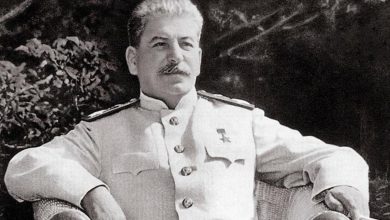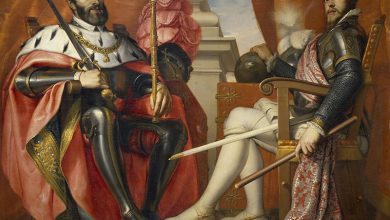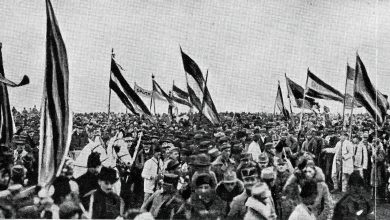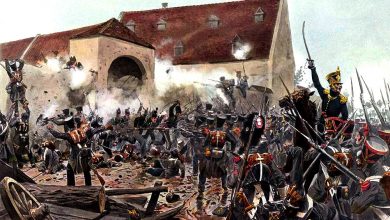Propaganda, Media and Fake News During the Yugoslav Wars

More than 120,000 people died during the first four years of the 1991 Yugoslav wars. The end of Tito’s reign, the failure of communism, and the resurgence of nationalist interests in every communist country were the official reasons for the breakup of Yugoslavia’s society. But how exactly did it go from a united federation to the worst civil war on European soil since World War II? And how did the media affected events?
Media, Disinformation, and Fake News
On the eve of the 21st century, a conflict on European soil erupts involving an essential weapon: the media. The instantaneity of modern media played a huge role in spreading propaganda and waging war in the minds of the citizens, in addition to waging it on the ground. A large amount of the public has instant access to it, controlling narratives and thus the masses. The manipulation of the Yugoslav population started with a regional media war.
The Federation of Yugoslavia had a federalised radio diffusion system, but lacked control over regional media, allowing each belligerent to promote their propaganda against other ethnicities within the same country. It was organised to create division and conflict within the general public in order to achieve nationalistic cohesion and justify the need for the war. National rhetoric became omnipresent and any initiative taken by the central government or by local authorities became highly politicised.
Waging a war can only be achieved successfully when the population supports it or gets involved. This is exactly how the political parties used the media to spread their ideology and foster the demonisation of their enemies, emphasising on existing tensions.

Several well-known propaganda techniques were used during the period of the war, such as cognitive dissonance, disinformation, scapegoating and name-calling to create tensions, and the creation of false stereotypes to influence the mind of the public. Nenad Pejić, author of the paper Media’s Responsibility for the War in Former Yugoslavia outlines a personal experience during the war: it demonstrated that educated adults were unable to discern false information from facts. There are countless examples of the media showing corpses and telling the public that they were Serbian victims killed by the Croats before the actual identification of the corpses had even begun.
This analytical failure in the public’s thoughts was partly due to the “CNN effect” which the Balkans suffered from. Immediate information and shocking images made the headlines every day and disappeared the next, without properly displaying facts. Svetlana Slpašak explains in her paper The War Started at Maksimir: Hate Speech in the Media that “no information of any importance had reached the public without comment or interpretation. The public was continuously kept in the state of mental adolescence”. It shocks public opinion and gives no in-depth explanation due to the shortening of attention span. Moreover, the media also used emotion to foster reactions from the public and played on hatred or fear, in the same way as clickbait and fake news do.
How ethnicity was used to justify war to the public
Insofar as there were no federal media, each faction started propagating information according to which side they were on, using ethnical arguments to reach this goal. In Serbian media, the Croats, the Albanians and the Muslims were portrayed as the masterminds of a conspiracy against Serbia, placing the Serbians in the role of the oppressed. On the other hand, Western media, which was mostly anti-Serbian, chose to only publish photos of Bosnian Muslims crying, refugees, and similar scenes. Serbian victims were never portrayed sympathetically, only as an aggressor, trivialising the Bosnian Serb victims of the war.
This trivialisation from both sides led to another consequence. Every individual is no longer an “individual”, but merely one of many in an ethnic group it belonged to, without individual responsibility. As Mr Pejić quoted Slavenk Drakulić: “This is what the war is doing to us – reducing us to one dimension. Before, I thought I was defined by my education, my job, my ideas, my character and -yes- my nationality too. Now I feel stripped of all of that”.

As a consequence of this depersonalisation, some Serbians committing atrocities will commit them in the name of all Serbians and all Serbians will partially bear that responsibility. Reaching this level of association requires important preparation of the messages propagated and reduces the individuals into basic and simple stereotypes, denuded of anything personal to create more hatred. This partly explains the scale of the cleansing. Mass media fuels participation to mass ethnic violence, involving citizens in the fight. A parallel may be drawn between the actions perpetrated in Rwanda and the use of radio to push every citizen to fight. No government is responsible, everybody is: it has become a civil war.
In the years following Tito’s death leading to the breakup of the Federation, all sides started glorifying their past, especially Serbia, which created a past filled with symbols and heroism against the Ottoman invader. The Serbian media called the Bosnian Muslims “Turks” because of their religion and called the Serbian heroes because of their fight against them, generating more violence.
Long-term effects and the current use of media in ex-Yugoslav countries
As much as this series of events belongs to the past, the effects of mass manipulation still have an impact in ex-Yugoslavia. Not only the stereotypes created during the war remain in citizens’ minds, but the media continues to publish such information in each country, showing little interest in peace-building.
Croatia now has an issue with nationalist rhetoric with the revival of a certain nostalgia of the Ustaše regime. There are several reports in the country of ethnic-related violence towards Serbians in public places. Mixed marriages, recurrent before the war, led to family disputes and domestic violence.
Serbia’s media remains the government’s propaganda medium as proven by independent organisations such as Reporters Without Borders. The State remains a strong actor in the media market by attributing funds non-transparently to those who support the government.
Bosnia’s situation remains divided along ethnic lines. The media in the Bosnian Federation supports the Bosnian State and cohabitation, while the media in the Republic Srpska supports the interests of ethnic Serbians.
This article has focused on the Croatian and the Bosnian Wars, but it is notable that anti-Kosovo rhetoric in Serbia remains high, just as there is anti-Serbia rhetoric in Kosovo. Serbia witnesses tenacious ethnic related violence against Kosovars and Albanians. Each media outlet in both Serbia and Kosovo portrays the normalisation talks as a zero-sum game, as if each step was a victory against the enemy. As in every war, propaganda messages are spread to give legitimacy to one side or the other to receive public support from the masses, and Yugoslavia was no exception.






I’ve been attempting to get the ‘big picture’ of what happened in former Yugoslavia but also trying to understand the many complexities in the ‘small picture.’ It is not easy for me, an American. I remember when I was younger (I am 72, and a combat veteran of the Army in Vietnam) that Sarajevo was a beautiful snowy mountain place where the Olympics were held, and that Belgrade was a beautiful, cosmopolitan city. We had the ‘Yugo’ car available for sale here in the US for a few years. I don’t remember where it was actually made. I recently met and spoke with briefly a female officer of the Serbian army who was training at the Newport, Rhode Island, Navy Base, here. I had never seen that military uniform before so I asked her what country she was from. She spoke excellent English was very pleasant to talk to. I asked her about the ‘war’ in Serbia, not knowing many details. Kosovo was the topic of conversation mostly. I only remember the awful bombing of Belgrade by NATO forces…the beautiful city…and seeing it all on TV. It brought back memories for me of the Vietnam war when I was 19 and I could relate on how terrible it was.
I thanked the officer for her kind information, as much as was allowed, and left determined to learn more about that complex situation. I’m still trying to piece everything together…..but it’s not easy.
You will never get the true picture of those events, everything is a lie.